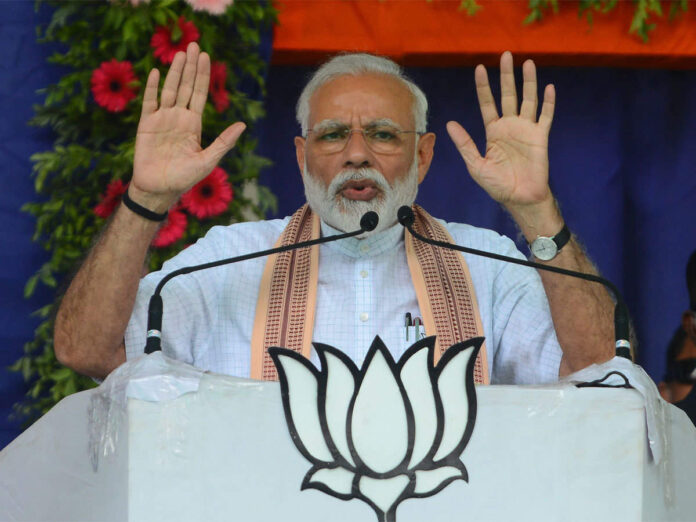During the heightened days of the Cold War, many crises arose in Suez Canal, Korea, Cuba and Vietnam when the USA and the former USSR were willing to use atomic weapons, but they stopped short of it because they both had the fear that nuclear war would eliminate both the superpowers. Therefore, they preferred to resolve their differences through diplomacy by following the doctrine of nuclear deterrence, popularly known as the balance of terror.
Similarly, many occasions came between Pakistan and India during the Kargil crisis of 1998, the militant attack on Indian Parliament in 2001 and particularly after the Mumbai terror attacks in 20008, when New Delhi started a blame game against Islamabad in the wake of its highly provocative actions like mobilization of troops. Pakistan had also taken defensive steps to meet any prospective aggression. But, India failed to implement its war-like designs, because Islamabad also possessed nuclear weapons.
Now, the situation is very dangerous, as since Narendra Modi, the leader of the ruling BJP, became Indian prime minister, he has been following extremist policies by ignoring the doctrine of nuclear deterrence, with respect to both Pakistan and China.
Tensions increased greatly between India and Pakistan, and between India and China on 5 August 2019, when the Indian extremist government abrogated Articles 35A and 370 of the Indian Constitution, which gave a special status to the disputed territory of Indian Occupied Kashmir. The Indian government also bifurcated Jammu and Kashmir into two union territories, Jammu and Kashmir and Ladakh, to be ruled by the federal government. New Delhi also issued an infamous map which displayed these divisions.
Besides Pakistan, China also rejected the Indian malicious acts as “unlawful and void”, saying that India’s decision to “include” some of China’s territory into its administrative jurisdiction “challenged” Beijing’s sovereignty.
India had escalated tensions with Islamabad especially in the aftermath of the false-flag terror attack at Pulwama in Indian-Occupied Kashmir. On 27 February 2019, in response to the Indian so-called pre-emptive air strike in the town of Balakot, close to the border with Pakistan’s sector of Kashmir, the Pakistan Air Force (PAF) shot down two Indian Air Force (IAF) fighter jets and launched aerial strikes at six targets in the IIOJK.
Unlike the past, now, border dispute between New Delhi and Beijing has become very alarming. The same is true in case of Pakistan in relation to the Indian Occupied Kashmir. In this backdrop, the tenets of nuclear doctrine cannot be applied to South Asia where Modi’s risky strategy could result in an all-out conventional war with Pakistan or China or at the same time, with both the countries, which may culminate into atomic war, enveloping the entire region and probably the whole world.
Indian forces have also intensified shelling inside Pakistani side of Kashmir by violating the ceasefire agreement across the Line of Control (LoC) and compelled Pakistan Army to give a matching reply.
Likewise, drastic tensions arose between New Delhi and Beijing on May 5, last year, when India occupied various areas, adjacent to the Line of Actual Control (LAC). In response, Chinese forces moved into the regions along the eastern Ladakh border and vacated the disputed territories.
Meanwhile, a number of talks between the high civil and military officials to de-escalate the situation failed due to Modi’s war-mongering strategy. Hence, the border dispute between India and China remains unsettled.
In the recent past, India’s Home Minister Amit Shah threatened that surgical strikes would be carried out inside Pakistani territory.
Reacting to his statement, Pakistani Foreign Minister Shah Mahmood Qureshi stated: “Let me make it clear to Amit Shah that if India made the mistake, we will give a befitting response…Why does India not launch a surgical strike on Ladakh?”
Chief of Army Staff Gen Qamar Javed Bajwa and Director General Inter Services Public Relations, Maj Gen Babar Iftikhar have repeatedly said that Pakistan’s armed forces “are ready to respond any Indian aggression with full might”. And Prime Minister Imran Khan, Mr Qureshi and General Bajwa also pointed out: “India is planning false flag operation– Pulwama-II…India faced great humiliation in the military standoff with China… India is facing many internal challenges especially after the emergence of coronavirus… Many issues have emerged in India after the August 5, 2019 move, which revoked the special status of Indian Occupied Jammu and Kashmir…. Now they [India] think the best way is to divert the attention towards Pakistan… While their quadcopters have also violated airspace on different occasions.”
While, hinting at Pakistan and China, Indian national security advisor Ajit Doval recently stated: “New India doctrine will take battle to foreign soil.”
Pointing to India’s belligerence and preparations, in an interview with a private TV channel, DG ISPR Maj Gen Babar Iftikhar said that Indian aggressive behaviour and ceasefire violations along the Line of Control gave indication of a full-scale war between India and Pakistan.
Nevertheless, in order to divert attention from flawed internal policies such as the unprecedented rise of Hindu extremism, the persecution of religious minorities —Sikhs, Christians and particularly Muslims, controversial agricultural laws which resulted into countrywide protests of farmers, various scandals, corruption of the top officials; Modi’s regime which is promoting religious and ethnic chauvinism in India, can take the risk of nuclear war with Pakistan or China.
Notably, Indian ex-Army Chief Gen Deepak Kapoor had stated on 29 December 2010 that the Indian Army “is now revising its five-year-old doctrine” and is preparing for a “possible two-front war with China and Pakistan.”
Nonetheless, unlike the past, now, border dispute between New Delhi and Beijing has become very alarming. The same is true in case of Pakistan in relation to the Indian Occupied Kashmir.
In this backdrop, the tenets of nuclear doctrine cannot be applied to South Asia where Modi’s risky strategy could result in an all-out conventional war with Pakistan or China or at the same time, with both the countries, which may culminate into atomic war, enveloping the entire region and probably the whole world.
























Does Modi want atomic war? No, but he wants to learn Black Magic from Niazi IK and his Jinn Wife!